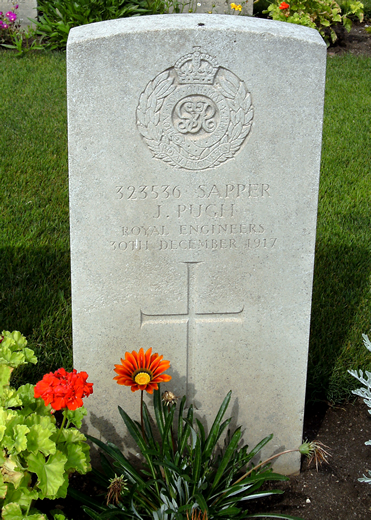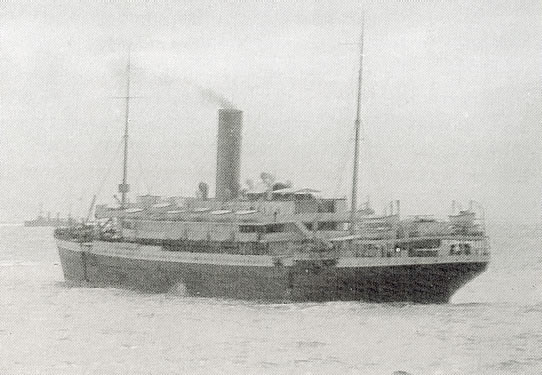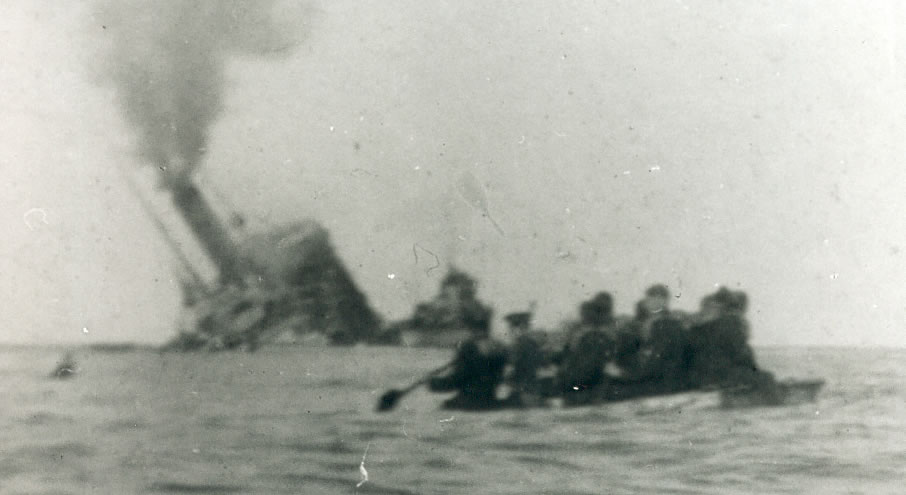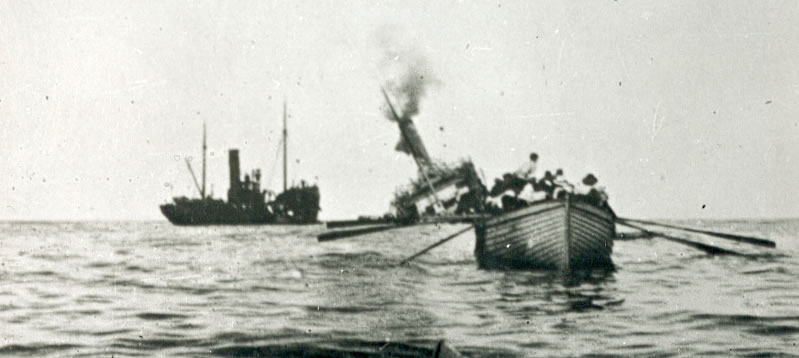|
|
||
John Pugh
Copyright The War Graves Photographic Project.

No / Rank: 323536 Sapper
Regiment: Royal Engineers
Battalion: 98th Light Railway Company ( Formerly Welsh Rgt)
Born: Glasbury, Radnorshire.
Enlisted: Caerphilly
Residence: Machen, Mon.
Date Died: 30.12.17
How Died: Died
Theatre of War: At Sea
John Pugh of ‘The Gables’ Wyndham Street, Machen, enlisted, aged 37 years and 7 months, on 5th April 1915. His occupation pre-enlistment is was ‘railway shunter’, he was married with three children. Sapper John Pugh is buried in the Hadra War Memorial Cemetery, Alexandria, Egypt. He had previously served with the Welsh Regiment in France in 1915 and was later transferred into the Army Service Corps.
In December 1917, John Pugh was aboard the Troop ship Aragon on his way to Egypt. The pictures of the Aragon are the copyright of the Imperial War Museum and reproduced here with their permission.
(Troop ship Aragon - Reproduced with permission from IWM, ref. Q62926)

Among the 2500 others aboard, was a detachment of V.A.D. nurses, one of whom wrote an account of the sinking of the Aragon by the German coastal submarine "UC.34" in her diary (quoted from The Roses of No Mans Land, Lyn Macdonald. Macmillan. p 230-1)
Gales raged in the Mediterranean and it was days before the Aragon was able to leave her sheltered anchorage for the last short lap of the voyage to Alexandria. On the third day they sighted the coast of Egypt. The ship's engines had stopped and she lay rocking gently ten miles offshore, waiting for the ship that would escort her to Alexandria harbour, while the rest of the convoy raced on towards Port Said………………
Suddenly there was a terrific crash and a lot of dust and bits of wood were blown up into the air over the aft well-deck…….
The V.A.D. nurses took to the lifeboats and transferred to a nearby trawler, from where they watched the tragic scene unfold.
The destroyer HMS Attack had pulled up right alongside the ship and she was taking men off as fast as she could. But the Aragon was sinking fast and as she finally started to go down, the front of the ship was right up out of the water and there were men pouring down the side into the sea; it was simply a swarm of khaki all down the side and it seemed as if it would never clear before she went altogether. We felt that all our friends were drowning before our eyes.
Just before she went down she was hit by another torpedo and then immediately afterwards the destroyer was hit. It was bad enough seeing the Aragon go, but when that happened it filled us with an even greater horror because all the survivors from Aragon were aboard. The torpedo hit her in the oil bunkers, so all the men who were thrown into the sea were swimming in a pool of oil. The tragic thing was that those who were wet, had had time to strip off their clothes on board the Destroyer and so they were naked when thrown into the sea. When they got into the oil it sickened them with the fumes and made them unconscious , and it covered their bodies so that it was impossible to pull them out of the water. It was terrible to see where the ships had been, and now where there was nothing but a little floating wreckage and hundreds of swimming figures. The submarine was obviously still around and the captain of our trawler decided that it was too dangerous to risk staying there any longer. So we started back for the shore.
Of the 2,500 on board 610 died, including six of the nurses, also amongst those who died in the sinking of the Aragon was Sergeant E.G. Horlock VC. He was awarded one of the early VC’s of the war for his bravery in action in September 1914.
The sinking of the Troop ship Aragon on 30th December 1917 with the loss of 610 lives
(Reproduced with permission from IWM, ref. sp2052 )

(Reproduced with permission of IWM, ref. sp2054)

